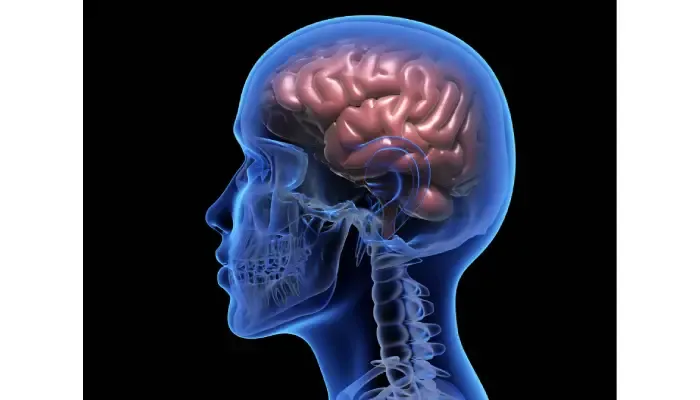Ketamine infusion therapy has emerged as a notable option in the field of mental health, particularly for those struggling with treatment-resistant depression. Originally an anesthetic, ketamine’s rapid antidepressant effects have drawn considerable interest. It mainly functions by blocking NMDA receptors, which promotes the release of neurotransmitters like glutamate, fostering new neural connections. With proper training, medical professionals can safely administer these infusions while closely monitoring patients for potential side effects such as dizziness or nausea. Research highlights its effectiveness across various disorders—from major depressive disorder to PTSD—offering hope where traditional treatments may fail. Proper training for providers is essential to ensure patient safety and effective outcomes.
1. Overview of Ketamine and Its Uses
Ketamine is a medication that was originally created as an anesthetic used in surgical settings. Recently, it has drawn considerable attention for its rapid antidepressant effects, especially among individuals who struggle with treatment-resistant depression. In a controlled medical environment, ketamine infusion therapy involves the intravenous delivery of this drug, allowing for precise dosing and monitoring.
The way ketamine works is quite unique. It primarily functions as an NMDA receptor antagonist, which can lead to the release of important neurotransmitters like glutamate. This process is believed to enhance neuroplasticity, which is the brain’s ability to adapt and reorganize itself. As a result, patients often experience relief from depressive symptoms much more quickly than they would with traditional antidepressants, which can take weeks to show effects.
Medical professionals, including psychiatrists, anesthesiologists, and nurse practitioners, are increasingly seeking specialized training in ketamine infusion therapy. This training covers various aspects, such as understanding how ketamine interacts with the body, assessing patients before treatment, and monitoring them during the infusion to manage any potential side effects effectively.
2. How Ketamine Works in the Brain?
Ketamine has emerged as a groundbreaking treatment for mental health issues, particularly in those who have not found relief from traditional therapies. Originally developed as an anesthetic, it operates mainly by antagonizing NMDA receptors in the brain. This action leads to a surge in neurotransmitters like glutamate, which are essential for neuroplasticity—the brain’s ability to adapt and reorganize itself. This is a key factor in why ketamine can alleviate depressive symptoms so quickly, often within hours, unlike standard antidepressants that may take weeks to show effects.
In a clinical setting, ketamine is administered intravenously, allowing for precise control over dosage and monitoring. This careful approach is crucial given its powerful effects on the brain. For example, during an infusion, patients may experience an altered state of consciousness, which can be unsettling but is generally transient. Medical professionals trained in this therapy learn to navigate these experiences, ensuring patient safety and comfort.
The rapid changes in mood and perception observed in patients during and after ketamine treatment highlight its unique mechanism. It not only provides immediate relief but also opens new pathways for long-term healing through enhanced synaptic connectivity. This makes it particularly valuable for conditions like Major Depressive Disorder, PTSD, and anxiety disorders, offering hope to those who have felt stuck in their struggles.
3. Importance of Training for Infusion Therapy
Training for ketamine infusion therapy is crucial for ensuring that patients receive the safest and most effective care. Medical professionals, such as psychiatrists and nurse practitioners, must be well-versed in the pharmacodynamics of ketamine to understand how it works in the brain. This knowledge helps in accurately assessing patients and determining the suitability of ketamine as a treatment option.
During training, providers learn to monitor patients closely during infusions. This monitoring is essential because while ketamine can provide rapid relief from symptoms, it can also lead to side effects like dissociation or dizziness. Understanding how to manage these effects is vital for patient safety and comfort.
Moreover, trained professionals are better equipped to recognize the signs of treatment-resistant depression and other mental health disorders that might benefit from ketamine therapy. This expertise enables them to implement infusion protocols effectively and make informed decisions about dosing and frequency.
With ongoing research, the landscape of ketamine therapy is ever-evolving. Healthcare providers must stay updated on the latest findings and best practices to optimize treatment outcomes. Therefore, comprehensive training not only enhances the immediate care provided to patients but also contributes to the broader understanding and application of ketamine in mental health treatment.
- Ensures safe administration of ketamine.
- Enhances understanding of patient selection criteria.
- Provides knowledge of dosage protocols.
- Teaches management of potential side effects.
- Covers ethical considerations and patient consent.
- Promotes effective communication with patients.
- Increases overall treatment effectiveness.
4. Mental Health Conditions Treated with Ketamine
Ketamine infusion therapy has emerged as a promising treatment for several mental health conditions, particularly those that are resistant to conventional therapies. Major Depressive Disorder (MDD) is one of the primary conditions where ketamine has shown rapid efficacy. Many patients suffering from MDD, who have not found relief through traditional antidepressants, report significant improvements in their symptoms following ketamine treatment.
Bipolar Disorder is another condition where ketamine may provide benefits, especially during depressive episodes. Patients often experience a quick reduction in depressive symptoms, which can stabilize mood and enhance overall functioning.
Post-Traumatic Stress Disorder (PTSD) is also being addressed with ketamine infusion therapy. Many individuals with PTSD have noted a decrease in intrusive thoughts and heightened anxiety, allowing them to engage more fully in therapy and daily life.
5. Research on Ketamine’s Effectiveness
Research on ketamine’s effectiveness in treating mental health issues has been growing rapidly over the past decade. Initial studies highlighted its ability to provide rapid relief for patients suffering from treatment-resistant depression, with many experiencing noticeable symptom reduction within hours of the first infusion. For instance, a study published in the journal Biological Psychiatry found that nearly 70% of participants with major depressive disorder reported significant improvements after just one session of ketamine infusion.
Further investigations have explored ketamine’s impact on other mental health conditions, such as bipolar disorder and PTSD. Some research indicates that ketamine not only alleviates depressive symptoms but also reduces suicidal thoughts, making it a critical option for patients in crisis. Longitudinal studies are ongoing to assess how long the effects last and whether repeated infusions are necessary.
Researchers are also examining the optimal dosing strategies and infusion frequencies to maximize benefits while minimizing potential side effects. The diversity in individual responses to treatment underscores the need for personalized approaches in ketamine therapy. As the research progresses, it aims to clarify the long-term effects of ketamine and its potential role in combination with traditional treatments, which could revolutionize how we approach mental health care.
6. Potential Side Effects of Ketamine Treatment
Ketamine infusion therapy, while promising, is not without its potential side effects. Commonly reported experiences include dissociation, where patients may feel disconnected from their bodies or surroundings. This can be unsettling, especially for those unfamiliar with the sensation. Other side effects include dizziness and nausea, which can occur during or shortly after the infusion. Although these effects are generally temporary, they highlight the importance of careful monitoring by healthcare providers throughout the treatment process. In some cases, patients might also experience increased blood pressure or a heightened heart rate, necessitating additional observation. It’s crucial for medical professionals to be trained in recognizing and managing these side effects to ensure patient safety and comfort.
7. Ethical Issues Surrounding Ketamine Use
The use of ketamine in mental health raises several ethical concerns that warrant careful consideration. One major issue is access to treatment, as ketamine therapy can be costly and not covered by all insurance plans, potentially limiting availability for those who need it most. Additionally, informed consent is crucial. Patients must fully understand the risks and benefits of ketamine therapy, including its side effects and the experimental nature of its use for mental health conditions.
The potential for misuse is another ethical dilemma. While ketamine has therapeutic benefits, it is also known for its recreational use, which can lead to addiction or abuse. This duality raises questions about how to ensure that treatment is administered responsibly. Healthcare providers must be vigilant in monitoring patients during and after infusion sessions to prevent misuse and manage any adverse effects.
Furthermore, the regulatory landscape surrounding ketamine therapy is still evolving. There is an ongoing need for guidelines to ensure safe practices in administering ketamine, especially as interest in this treatment grows. Establishing clear protocols can help mitigate risks and promote ethical standards in practice.
8. Future Research Directions for Ketamine Therapy
Research on ketamine therapy is evolving rapidly, with several promising directions on the horizon. One significant area of focus is the long-term effects of ketamine treatment. While many studies demonstrate rapid relief from depressive symptoms, understanding how these effects persist over time—and the best strategies for maintaining this relief—remains crucial.
Another exciting avenue is exploring the potential of ketamine in combination with other treatments. For instance, researchers are investigating if combining ketamine with psychotherapy could enhance treatment outcomes, particularly for patients with complex mental health needs. This integrative approach might optimize the benefits of both modalities, leading to more comprehensive care.
Additionally, there is growing interest in the development of alternative formulations of ketamine, such as nasal sprays or oral versions. These could increase accessibility and convenience for patients, making it easier for them to receive treatment in various settings.
Resource URL:
https://en.wikipedia.org/wiki/Ketamine

Mary Burns is a dedicated writer focusing on health and fitness topics. With a passion for promoting wellness and vitality, Mary shares her knowledge and expertise through engaging and informative blog posts.




